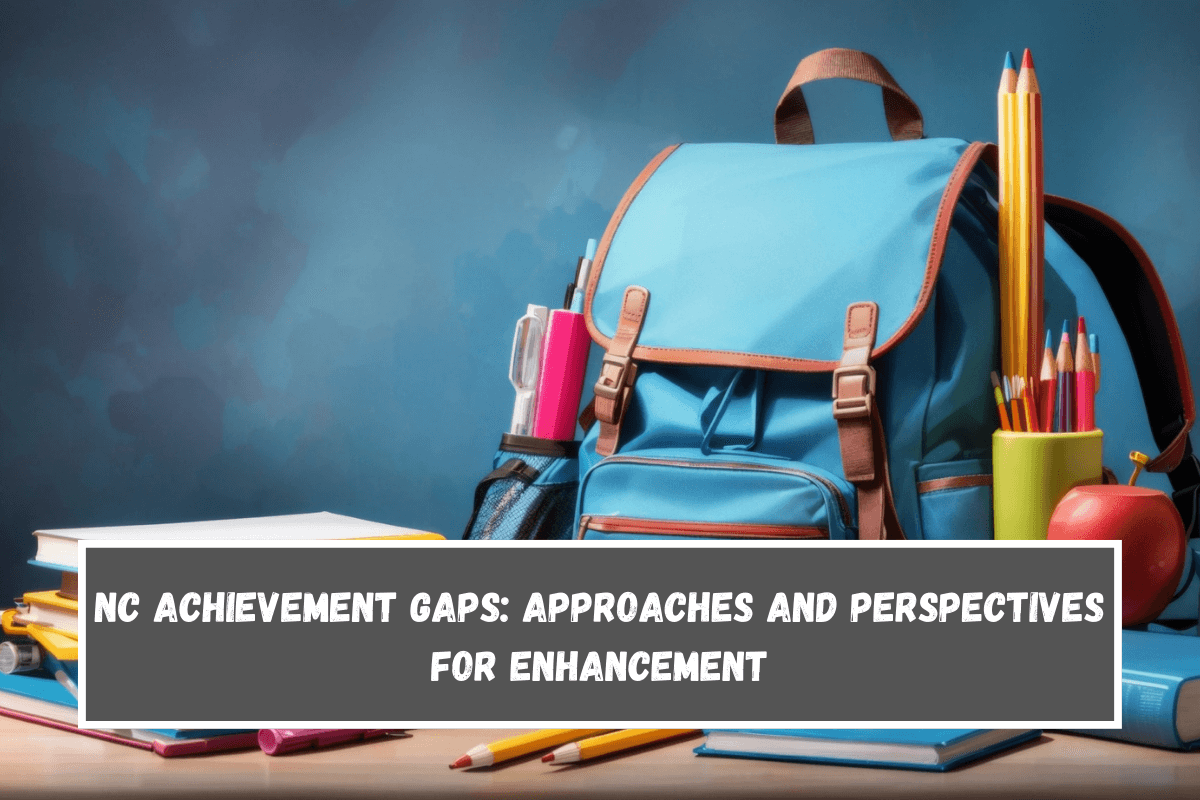Academic performance gaps that continue to exist amongst various student groupings have been brought to light by Public Instruction (NCDPI).
There are still achievement inequalities that disproportionately impact Black and Hispanic kids, despite improvements in graduation rates and math competence among all pupils, according to the data. These tendencies call for focused initiatives to ensure fair educational outcomes because they are representative of larger national trends.
Carolina’s Performance Trends
The latest data in North Carolina shows progress in a few areas of the curriculum, including a minor rise in the state’s graduation rates and increases in math competency for all pupils. All racial and ethnic groupings still perform at rather diverse levels, nevertheless, with some notable exceptions.
As per the NC DPI, students from Black and Hispanic backgrounds are less likely than their White and Asian peers to fulfill grade-level competency requirements, even if the overall percentage of students achieving this level has grown.
National data aligns with the performance gaps that have been seen in North Carolina. Similar patterns of statewide variances in academic achievement are seen in reports from the National Assessment of Educational Progress (NAEP).
Which are frequently caused by intricate variables such differences in instructional quality, access to resources, and support levels. Such discrepancies point to the necessity of targeted interventions to address the particular difficulties encountered by various student populations. NC DPI
Effective Methods in Different States
Innovative approaches to addressing performance disparities have been put into practice in several states with encouraging outcomes. These tactics provide insightful information that could guide North Carolina’s efforts:
Massachusetts: Increasing access to early childhood education and emphasizing the development of core reading abilities at a young age are two of the state’s major early literacy program investments.
Students who were previously performing below grade level have shown significant increases in reading proficiency as a result of this technique. In order to close achievement inequalities, Massachusetts has placed a strong emphasis on data-driven instruction and professional development for teachers.
Tennessee: Tennessee has made significant strides toward improving literacy through the “Read to be Ready” campaign, which includes funding increases for school-based literacy initiatives, comprehensive teacher coaching, and support for summer reading programs.
Consequently, advances in early-grade reading competency have been noted by the state, especially for pupils who had previously experienced difficulties with literacy.
California: According to the state’s Local Control Funding Formula (LCFF), districts with larger proportions of underprivileged kids are given more funding.
Customized interventions, such extra time for learning, specialized tutoring, and socio-emotional support initiatives, can be implemented in schools thanks to this funding approach. Both student participation and academic achievement have improved as a result of these efforts.
Important Success Factors
Combining several focused tactics, such as the following, has led to success in other states:
Programs that emphasize early literacy and basic skills have been shown to be successful in aiding students who may struggle academically. Examples of such programs are those found in Massachusetts and Tennessee.
It is possible to provide a solid foundation for every student by increasing the availability of high-quality preschool programs and offering specialized teacher training in reading science.
Data-Driven Decision-Making: States such as Massachusetts and California have used student performance data to detect gaps early and offer customized treatments. Allocating resources and providing help can be done more precisely when data is used as a guide.
Equitable Funding Models: The equitable funding model used in California guarantees that districts with greater needs will have access to additional financing for the purpose of putting into practice interventions that directly lower learning obstacles. For all kids, this paradigm may offer more equitable opportunities.
Opportunities for Extended Learning: Florida’s utilization of programs for after-school tutoring and summer learning has shown the advantages of more instructional time in helping students make up academic deficiencies.
North Carolina Recommendations:
Several tactics that have been effective in other states could be adopted by North Carolina in order to improve results for kids who are impacted by achievement gaps:
Extend Early Literacy and Intervention Programs: North Carolina may address achievement gaps before they get bigger by funding early childhood education and literacy programs. The outcomes for students may be greatly improved if instructors received professional development that emphasizes early interventions and the science of reading.
Apply Equitable Funding Models: North Carolina could take a cue from California, wherein districts and schools with greater needs receive increased funding in order to receive focused assistance and interventions.
Adopt Strategies Driven by Data: It is possible to spot gaps early and concentrate support where it is most needed by using student performance data to inform decision-making and resource allocation.
Boost the availability of opportunities for extended learning By offering extra instructional time for children who need it most, more after-school programs, summer learning opportunities, and specialized tutoring can help close gaps in knowledge.
Encourage Socio-Emotional Learning and Well-Being: Building supportive learning settings and offering mental health resources can assist in addressing non-academic learning barriers, enhancing student engagement and accomplishment overall.
Forward Motion
To reduce achievement gaps and guarantee that all kids have equal opportunities for success, North Carolina has made some progress, but much work remains. North Carolina can build a more equitable, data-driven, and focused education system that serves the needs of all of its children by taking inspiration from other states’ successful policies and implementing data-driven, inclusive approaches.















Leave a Reply